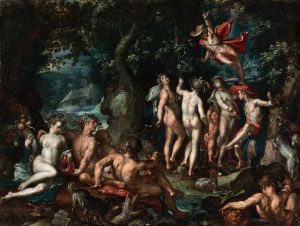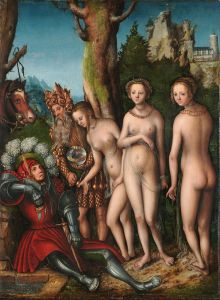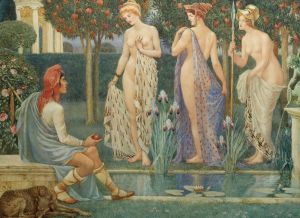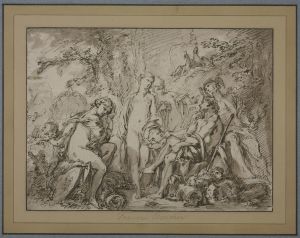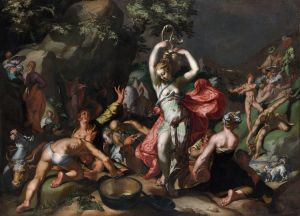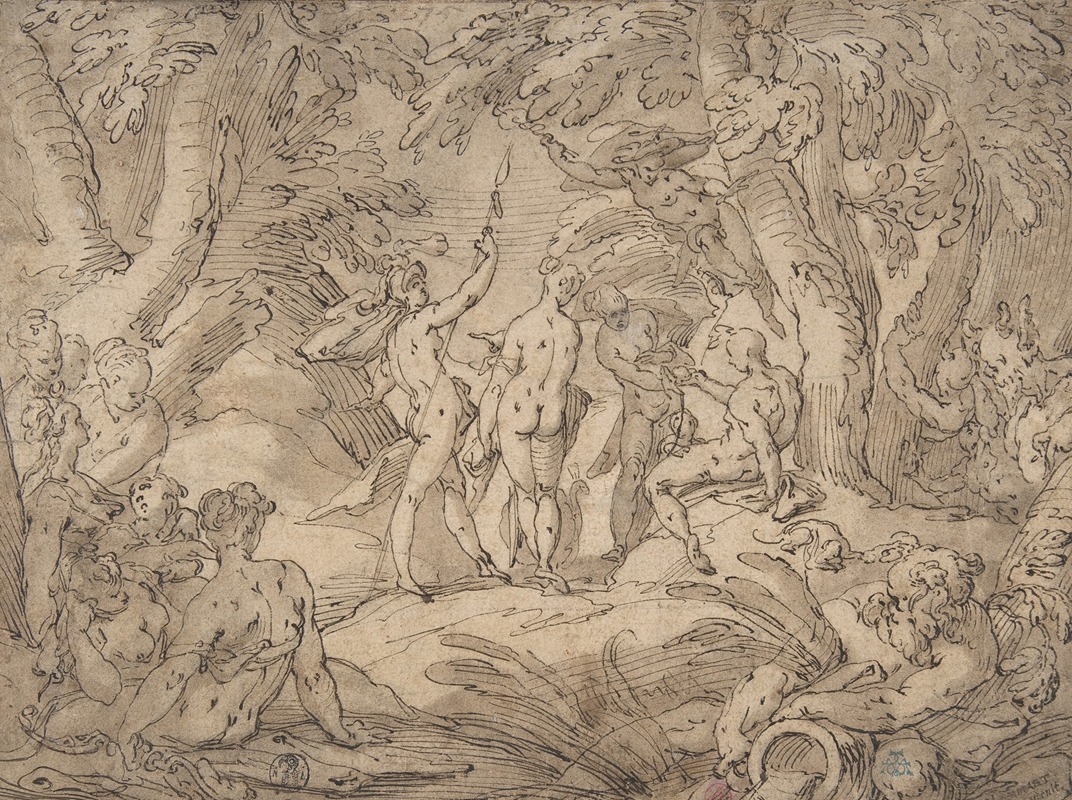
The Judgment of Paris
A hand-painted replica of Abraham Bloemaert’s masterpiece The Judgment of Paris, meticulously crafted by professional artists to capture the true essence of the original. Each piece is created with museum-quality canvas and rare mineral pigments, carefully painted by experienced artists with delicate brushstrokes and rich, layered colors to perfectly recreate the texture of the original artwork. Unlike machine-printed reproductions, this hand-painted version brings the painting to life, infused with the artist’s emotions and skill in every stroke. Whether for personal collection or home decoration, it instantly elevates the artistic atmosphere of any space.
"The Judgment of Paris" is a painting by the Dutch artist Abraham Bloemaert, created in the early 17th century. Bloemaert, born in 1566 and died in 1651, was a prominent figure in the Dutch Golden Age of painting, known for his versatility and his contributions to both religious and mythological subjects.
The painting depicts the classical mythological story of the Judgment of Paris, a tale from Greek mythology that has been a popular subject in Western art. According to the myth, Paris, a Trojan prince, was chosen to decide which of the three goddesses—Hera, Athena, or Aphrodite—was the fairest. Each goddess offered Paris a bribe: Hera promised power, Athena offered wisdom and skill in war, and Aphrodite tempted him with the love of the most beautiful woman in the world, Helen of Troy. Paris ultimately awarded the golden apple to Aphrodite, leading to the events that sparked the Trojan War.
In Bloemaert's rendition of this myth, the artist captures the moment of decision with a composition that emphasizes the beauty and grace of the goddesses. The painting is characterized by its dynamic arrangement and the use of vibrant colors, which are typical of Bloemaert's style. The figures are depicted with a sense of movement and fluidity, and the landscape in the background provides a serene contrast to the tension of the scene.
Bloemaert's work is notable for its detailed and expressive figures, which reflect his training and influences from both Northern and Italian Renaissance art. He was a master of chiaroscuro, the use of strong contrasts between light and dark to achieve a sense of volume and three-dimensionality. This technique is evident in "The Judgment of Paris," where the lighting highlights the contours of the figures and adds depth to the composition.
The painting also showcases Bloemaert's skill in rendering the human form and his attention to anatomical accuracy. The goddesses are depicted with idealized beauty, their poses and gestures conveying a sense of elegance and poise. Paris, often shown in a contemplative stance, reflects the weight of his decision, adding a psychological dimension to the narrative.
"The Judgment of Paris" by Abraham Bloemaert is an exemplary work that illustrates the artist's ability to blend classical themes with his own distinctive style. It remains a significant piece within the context of Dutch Golden Age painting and continues to be appreciated for its artistic and historical value.






